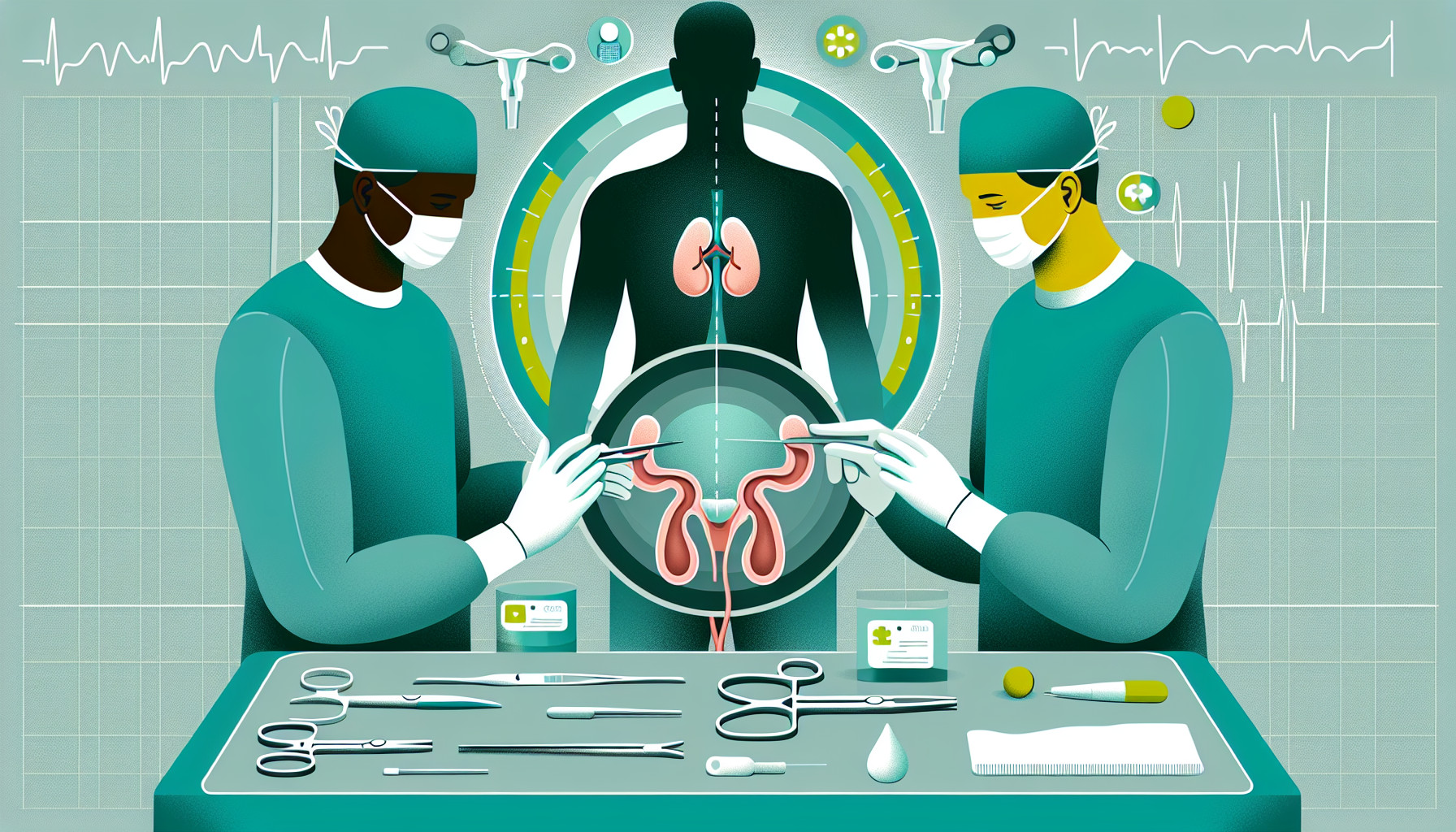Our Summary
The research paper is about a surgical procedure called Radical Cystectomy (RC), which is used to treat bladder cancer, but is known to have high risks of complications and death even with the use of modern technology and recovery methods. The paper explores the idea of preparing patients better before the surgery to help reduce these risks. This can be done by thoroughly assessing the patient’s nutrition levels, providing them with supplements, and helping them improve their physical strength and health before the surgery. The researchers have reviewed and analyzed existing studies on this topic.
FAQs
- What is radical cystectomy and what risks are associated with it?
- How can preoperative optimization potentially reduce morbidity and mortality from radical cystectomy?
- What does preoperative assessment and optimization in radical cystectomy entail?
Doctor’s Tip
One helpful tip a doctor might tell a patient about cystectomy is to focus on preoperative optimization through comprehensive nutritional evaluation and supplementation. This can help reduce the risk of complications and improve recovery after surgery. It’s also important to consider prehabilitation to strengthen the body and improve overall health before undergoing a radical cystectomy.
Suitable For
Patients who are typically recommended for cystectomy include those with muscle-invasive bladder cancer, high-grade non-muscle invasive bladder cancer that has not responded to other treatments, and patients with advanced stages of bladder cancer. Additionally, patients with other bladder conditions such as interstitial cystitis or neurogenic bladder may also be recommended for cystectomy. It is important for patients to undergo a comprehensive preoperative assessment to determine if they are suitable candidates for the surgery and to optimize their overall health before undergoing the procedure.
Timeline
Before cystectomy:
- Patient undergoes preoperative assessment to determine their overall health and fitness for surgery
- Patient may receive nutritional evaluation and supplementation to optimize their health before surgery
- Patient may participate in prehabilitation exercises to improve physical fitness and strength
- Surgery is scheduled and patient is prepared for the procedure
After cystectomy:
- Patient undergoes surgery to remove the bladder and possibly other surrounding tissues
- Patient may experience pain, discomfort, and fatigue post-operatively
- Patient receives postoperative care to manage pain, prevent infection, and promote healing
- Patient may undergo follow-up appointments to monitor recovery and address any complications
- Patient may need to make lifestyle changes to adjust to life without a bladder, such as learning to use a urostomy bag
Overall, the timeline for a patient before and after cystectomy involves comprehensive preoperative assessment and optimization to improve outcomes, followed by surgery and postoperative care to promote healing and recovery.
What to Ask Your Doctor
- What are the potential risks and complications associated with cystectomy surgery?
- What is the expected recovery time and rehabilitation process following cystectomy?
- Are there any alternative treatment options to consider before undergoing cystectomy?
- How can I best prepare my body for surgery through nutrition and prehabilitation?
- What kind of follow-up care will be needed after cystectomy surgery?
- Are there any specific dietary restrictions or recommendations I should follow after cystectomy?
- How will cystectomy affect my quality of life and daily activities in the long term?
- What is the success rate of cystectomy surgery in terms of cancer removal and recurrence?
- Are there any clinical trials or advancements in cystectomy treatment that I should be aware of?
- How can I best communicate with my healthcare team and stay informed throughout the cystectomy process?
Reference
Authors: Ellis JL, Dalimov Z, Chew L, Quek ML. Journal: J Surg Oncol. 2024 Jan;129(1):138-144. doi: 10.1002/jso.27546. Epub 2023 Nov 30. PMID: 38037317
